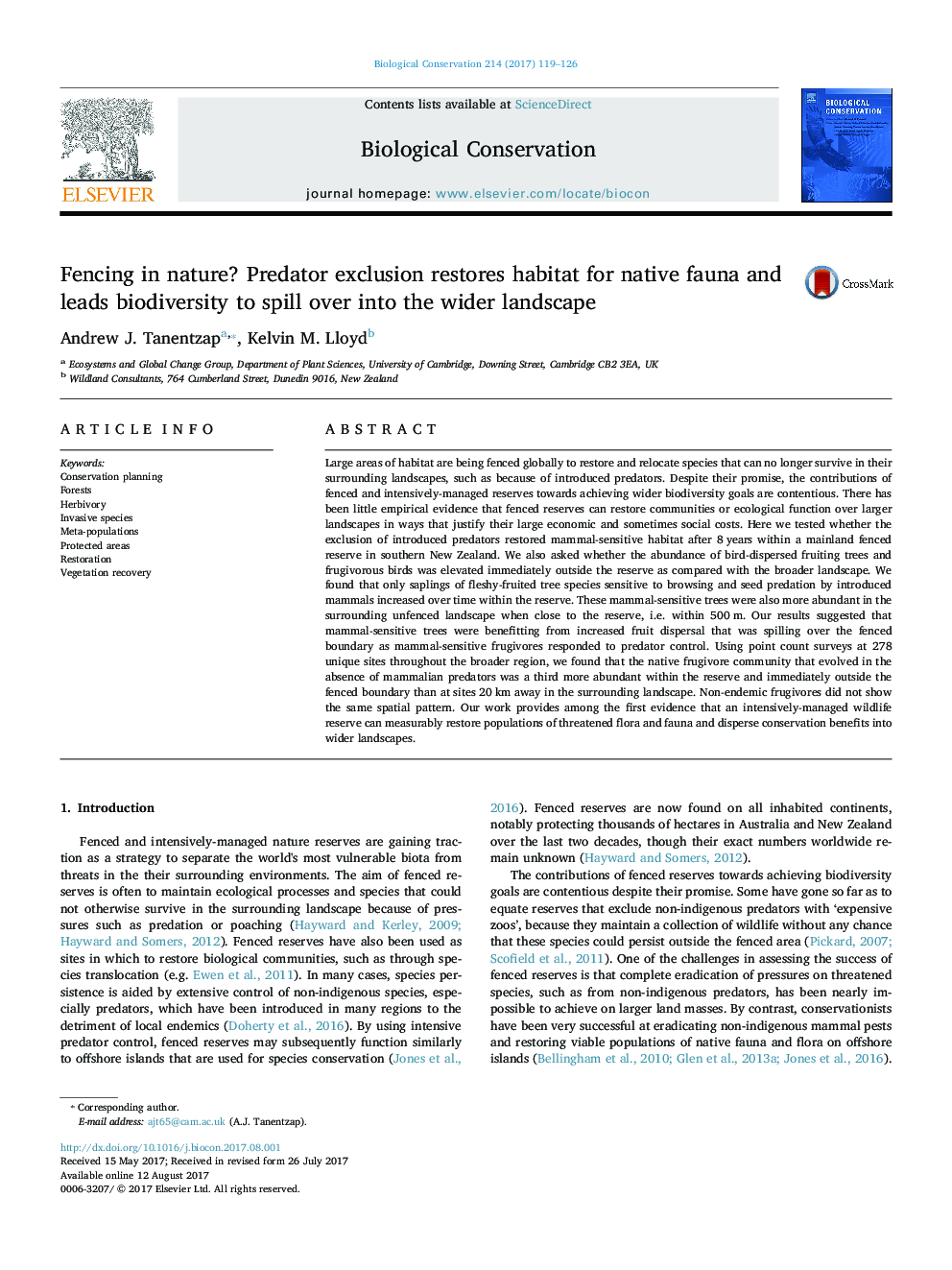| کد مقاله | کد نشریه | سال انتشار | مقاله انگلیسی | نسخه تمام متن |
|---|---|---|---|---|
| 5742940 | 1617891 | 2017 | 8 صفحه PDF | دانلود رایگان |
Large areas of habitat are being fenced globally to restore and relocate species that can no longer survive in their surrounding landscapes, such as because of introduced predators. Despite their promise, the contributions of fenced and intensively-managed reserves towards achieving wider biodiversity goals are contentious. There has been little empirical evidence that fenced reserves can restore communities or ecological function over larger landscapes in ways that justify their large economic and sometimes social costs. Here we tested whether the exclusion of introduced predators restored mammal-sensitive habitat after 8Â years within a mainland fenced reserve in southern New Zealand. We also asked whether the abundance of bird-dispersed fruiting trees and frugivorous birds was elevated immediately outside the reserve as compared with the broader landscape. We found that only saplings of fleshy-fruited tree species sensitive to browsing and seed predation by introduced mammals increased over time within the reserve. These mammal-sensitive trees were also more abundant in the surrounding unfenced landscape when close to the reserve, i.e. within 500Â m. Our results suggested that mammal-sensitive trees were benefitting from increased fruit dispersal that was spilling over the fenced boundary as mammal-sensitive frugivores responded to predator control. Using point count surveys at 278 unique sites throughout the broader region, we found that the native frugivore community that evolved in the absence of mammalian predators was a third more abundant within the reserve and immediately outside the fenced boundary than at sites 20Â km away in the surrounding landscape. Non-endemic frugivores did not show the same spatial pattern. Our work provides among the first evidence that an intensively-managed wildlife reserve can measurably restore populations of threatened flora and fauna and disperse conservation benefits into wider landscapes.
Journal: Biological Conservation - Volume 214, October 2017, Pages 119-126
